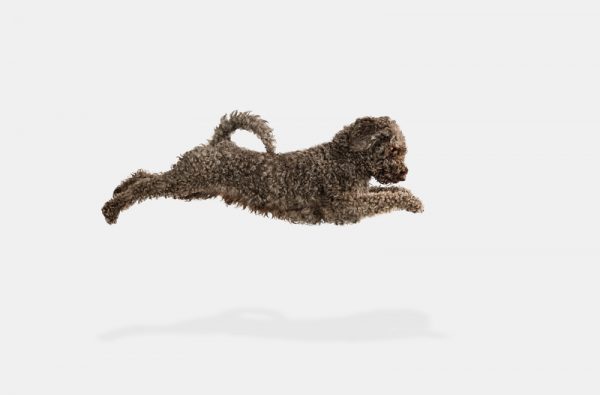
A neck is important to a dog because: 1) It holds up their head; 2) It enables the dog turn their head away from the person shrieking, “DROP THAT,” to effectively feign deafness; 3) It’s a place on the dog on which to place a collar that cost more than your shoes.
Now that we’ve ascertained that a neck is important for a lot of reasons, structurally speaking, it reveals a lot. Dogs with long necks typically have well laid-back shoulder blades. Short necked dogs usually have steep shoulders, and steep shouldered dogs appear to have short necks because the distance between their head and their shoulders seems shorter than usual. We cite no less an authority on this than structure gurus, Edward M. Gilbert and Thelma Brown.
Neck length is written into many breed standards, and whether it’s “long” or “moderate,” it comes down to the breed and what its function is.
“A long thin neck is too weak to pick up and carry large birds with stamina and longevity. A short neck makes it more difficult for the retriever to follow a trail and pick up birds of the ground.” This sentence that comes straight out of the Flat-Coated Retriever’s guide does a fine job of explaining why neck is important in a sporting breed that retrieves. In case of the Bloodhound, the neck is long because this is a dog that keeps its nose to the ground to pick up scents. A short neck would be exhausting for the dog, to say nothing of the pain it would ultimate cause in the shoulders over the long haul.
The wording in some breed standards is less exacting which we interpret to mean that when it comes to neck length, “it depends.” The Labrador Retriever standard is a good example of this: “The neck should be of proper length to allow the dog to retrieve game easily. It should be muscular and free from throatiness.” So what is “proper” length? It depends. It depends on other parts of the dog, and tacit in the aforementioned sentence is the importance of balance. The neck must “fit” with the rest of the dog.
Conversely, the Lagotto Romagnolo standard is exacting. “The neck is strong muscular, thick, and oval in shape. It is lean, well set off from the nape, and slightly arched. The length of neck is slightly less than the total length of the head. Neck should blend smoothly into shoulders. Muscles are extremely powerful. A correct neck is fundamental to function.”
Fundamental to function. Three words that carry the rest of the description. Historically, the Lagotto was water retriever and certainly, that called for a strong, muscular neck. Later, it became a specialized truffle hunter. Read: Nose to the ground:
At the end of the day, it’s important to check your breed standard, ask yourself why the neck length is described as it is, and how does it help the dog function according to its task? If a dog’s neck is too long or too short, how does it impact the dog? There is usually a “sweet spot” of length, or, as our post title says, the “Goldilocks-just-right-length.”
Image: Lagotto Rogmagnolo by ©Anton Vierietin/Dreamstime.com
